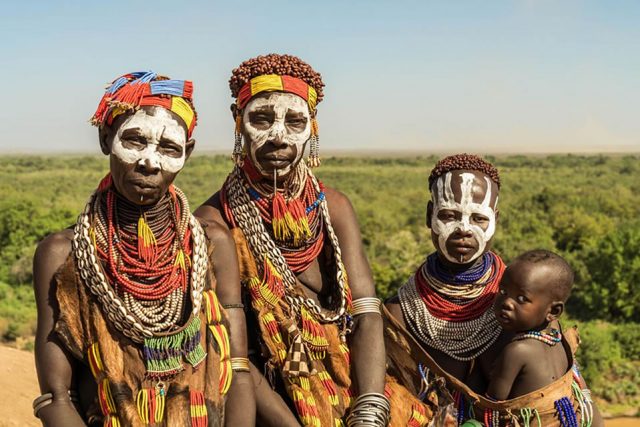Rising in the high lands south-west of Addis Ababa, the Omo river courses south for almost 1,000km (620miles) but never reaches the sea. It is the sole feeder of Lake Turkana, East Africa’s fourth largest lake, which the river enters just above the Kenyan border.
As it tumbles off the escarpment, the omo passes from alpine environment and rain forest on into savanna country-finally into searing desert lands. Through the millennia its flood-swollen waters have cut stupendous gorges. Wild game roams in abundance on both banks while strange and colorful birds dart in and out of the lush vegetation.
Reckoned by enthusiasts to be one of Africa’s premier locations for White Water River rafting, its early fury takes it through gorges hundreds of meters deep and over fish and the huge shapes of crocodile and hippo.
On the final leg of its journey south to Turkana, the Omo forms the border between the Kefa and Gamo Gofa provinces. It’s here that Ethiopia’s largest nature sanctuary, the Omo National Park-one of the richest in spectacle and game and yet one of the least visited areas in East and central Africa – located. Another sanctuary the Gago national park has been established on the eastern banks of the river: a land of endless, distant horizons.
Both sanctuaries can offer incredible spectacles of big game. Both have the merit, also, of being far from the beaten track and virtually unexplored, and are places in which game can be seen in a truly natural state.
Most easily accessed from the town of Jinka, Mago national park is mainly savannah, with some forested areas around the rivers. It was set up to conserve the large numbers of plains animal in the area, particularly buffalo, elephant and giraffe. The birds are also typical of the dry grassland habitat, featuring bustards, horn bills, weavers, and starlings. Kingfishers and herons feed in and around the Neri River, which provides an alternative habitat. Although adjoining Mago, the large and beautiful Omo national park has been hardly visited in the last two decades, as getting there has been so difficult.
The parks are extensive wilderness areas and wildlife can be prolific: large herds of eland and buffalo, elephant, giraffe, cheetah, lion, leopard, and Burchell’s zebra, Lesser kudu, lelwel hartebeest, topi and oryx are all resident species, as well as deBrazza’s and colobus monkeys and Anubis baboon. The 306 bird species recorded include many that will be familiar to East African visitors.








